#ureongi gaksi
Explore tagged Tumblr posts
Text
My tag for this series is 'fairy tales'.
#polls#fairy tales#folktales#culhwch and olwen#culhwch ac olwen#the firebird and princess vasilisa#noori jam tamachi#the tinderbox#the snail bride#ureongi gaksi#cola pesce#nicholas fish#the three princes of serendip#the wolf and the fox#the witch in the stone boat
19 notes
·
View notes
Text
Mythic Creatures by Region & Culture
Part 8: Asia and South Pacific
The Mesopotamian entries are often culture-specific and I'll need to sort them into their respective regions in future.
allegedly Asian
Barometz; Salamander
Smaller Entries:
Akathaso, Burma, tree spirit; Barmanou, Pakistan; Benzaiten; Churel; Creatures of Azerbaijan; Dab Hmong; Dakhanavar Armenian; Ḍākinī; Death; Landlord Deities; Mountain God; Peacock Princess; Sin-you; Sky Fox; Teng; Tenghuang; Xeglun Tungusic Ainu
Akkorokamui; Amemasu; Hoyau; Kenas-unarpe; Korpokkur; Mintuci Cambodia; Koan Kroach nightmare fuel; Kting voar also Vietnam; Mrenh kongveal
China
Ao; Ao Guang; Azure Lung; Bai Lung Ma; Bai Suzhen; Bai Ze; Bao Si; Bashe; Bi Fang bird; Bixi; Black Tortoise; Boto_and_Dolphin_Spirits; Cangjie; Chang; Chi; Chinas; Chinese guardian lions; Chinese Monkey Creatures; Chinese serpent killed by Li Ji; Chinese Souls; Chiwen; Chiyou; City God; Daji; Dēnglung; Dilung; Diting; Dogs in Chinese mythology; Dong Yong and the Seventh Fairy; Dǒumǔ; Dragon turtle; Fangfeng; Fangxiangshi; Feilian; Feilung; Feng; Fènghuáng; Fengli; Flying Horse of Gansu; Four Perils; Fox Spirit; Fuxi; Fuzanglung; Fuzhu; Gangcheori; Ghosts in Chinese culture; Gonggong; Guang yi ji; Hairen; He-He Er Xian; Hong; Hòutǔ; Hun and po; Hundun; Huodou; Húxiān; Jiangshi; Jiaolung; Jin Chan; Jinmenju also Japanese; Jiutian Xuannü; Jiutou Zhiji Jing; Jiuweihu; Jué yuán (Japanese version Jueyuan); King Father of the East; Kitchen God; Kuafu; Kui; Lake Tianchi Monster; Luan; Luduan; Lung; Lungma; Lungmu; Magpie Bridge; Magu; Menshen; Mo; Mogwai; Momu; Moon Rabbit; Nian; Nine-headed bird; Nüba; Nüwa; Pangu; Panhu; Panlung; Peng; Penghou; Pig Dragon; Pipa Jing; Pixiu; Pulao; Qianlima also Korean; Qilin; Qingji; Qingniao; Qiulung; Queen Mother of the West; Sanshi; Sha Wujing; Shangyang; Shen; Shen_clam_monster; Shenlung; Shi Dog; Shuimu; Spirit Turtle; Stone Sentinel Maze; Swan Maiden Yao; Taotie; The Governor of Nanke; The Painted Skin; The Nine Peahens and the Golden Apples; Three-legged crow also Japanese and Korean; Tianguo; Tianlung; Tianma; Tu'er Shen; Tubo; Tudigong; Unicorn; Watersheep (see Vegetable Lamb of Tartary); Vermillion Bird; Wangliang; White Tiger; World Turtle; Wutong Shen; Wuzhiqi; Xian; Xiangliu; Xiao; Xiezhi; Xingtian; Xirang; Yao Grass; Yāoguài; Yellow Lung; Yeren; Yeti also Tibetan and Nepali; Yinglung; Zhenniao; Zhu Bajie; Zhulung
Hittite
Annunaki; Illuyanka the equivalent of Hurrian Ḫedammu; Hittite Goddesses of Fate
Hurrian
Annunaki; Ḫedammu the equivalent of Hittite Illuyanka; Tilla; Ullikummi; Upelluri
Iran (Persia)
Akvan Div; Al but also in Mongolia, Russia, Afghanistan, Caucasus; Almas also Turkic and Mongolia; Anguiped also Greek and Roman.; Arzhang Div; Azhdaha; Chamrosh; Div; Div-e Sepid; Fulad-zereh; Gochihr; Griffon; Huma bird; Karkadann allegedly lived in India and Persia; Manticore allegedly lived in India; Peri also Turkic, Islamic (and Indian?); Rakhsh; Shabrang; Shahbaz; Shahmaran Indo-Iranian and Turkic; Shahrokh; Sheshe; Simurgh; Sphinx in a wide sense; Takam; Tyger allegedly lived in Persia; Unicorn; Vegetable Lamb of Tartary the Chinese watersheep allegedly lived in Persia; Werehyena; Winged Unicorn; Zahhāk
Java
Antaboga, pre-Islamic, Hindu; Kakawin; Keong Emas; Wewe Gombel Korea; Bulgae; Chilseok; Dokkaebi; Dokkaebi bangmangi; Egg Ghost; Gasin (house god); Gunungsin; Gwisin; Haesindang Park; Inmyeonjo; Jihaguk daejeok toechi seolhwa; Korean dragon; Korean Virgin Ghost; Munshin; Namu doryeong; Pulgasari; Qianlima also Chinese; Ryong; Samsin Halmeoni; Seonangshin; Sosamsin; The Heavenly Maiden and the Woodcutter; Three-legged crow also Japanese and Chinese; Ungnyeo; Ureongi gaksi;
Mongolia
Al but also in Persia, Russia, Afghanistan, Caucasus; Almas also Iran and Turkic; Aq Bars, winged snow leopard, heraldry from 800s onwards, also Slavic; Mongolian Death Worm Myanmar; Manussiha; Nat; Nawarupa; Pyinsarupa; Sphinx in a wide sense; Thayé; Yokkaso
Nepal
Gurumāpā; Khyāh; Kichkandi; Lākhey; Murkatta; Yeti also Chinese and Tibetan
Philippines
Alan of the Tinguian people; Amalanhig of the Visayan; type of Aswang; Amomongo of the Visayan; Angalo of the Ilocano; Anggitay Philippine centauride, female Tikbalang; Anito; Aswang; Bakunawa; Bal-Bal; Batibat of the Ilocano; Berbalang of Mindanao towns; Berberoka northern Luzon; Bernardo Carpio; Bungisngis Meluz, Orion, Bataan and Batangas; Busaw; Buso Bagobo; Dalaketnon Cebuano; Ekek; Engkanto; Ibong Adarna; Kapre; Kataw; Kumakatok; Manananggal; Manaul; Mandurugo; Minokawa; Nuno sa punso; Philippine Mytic Creatures; Pugot; Sarangay; Sarimanok; Sigbin; Sirena; Siyokoy; Tigmamanukan; Tikbalang; Tiyanak; Wakwak
allegedly Scythian (rider culture, no written records, all inhabitants and creatures based on Greek reports)
Amazons, Amazons (List); Arimaspi north Scythia; Scythian genealogical myth; Scythian religion; Scythians; Tarand; Vegetable Lamb of Tartary
Taiwan
Hanitu; Mo-sin-a; Ta'ai; Tek-ko-kui
Thai
Apsonsi; Cha kla; Hatsadiling; Hemaraj; Kong Koi; Krahang; Krasue; Kuman Thong; Mae Nak Phra Khanong; Mae yanang; Nang Mai; Nang Ta-khian; Nang Tani; Nariphon; Ninlaret; Phi phong; Phi Tai Hong; Phisuea Samut; Pop (ghost); Sphinx in a wide sense; Sudsakorn; Suvannamaccha
Tibet
Gyalpo spirits; Ro-langs; Simhamukha; Snow Lion; Tibetan myth; Wind Horse; Yeti also Chinese and Nepali
Vietnam
Hồ ly tinh; Kting voar also Cambodia; Lạc bird; Nghê; Rồng ; Vietnamese Dragons
Turkic
Äbädä, also found in Siberian mythology; Abasy, also found in Siberian mythology; Aiy Yakut; Al in Mongolia, Russia, Afghanistan, Caucasus; Al Ana; Al Basty from Sumerian; Alara, also found in Siberian mythology; Almas also Iran and Mongolia; Archura; Asena; Ayaz Ata; Bai Baianai also Yakut; Basty Turkic alp or mare; Bichura Turkic household spirit; Chai nenesi; Chesma iyesi; Çor also Siberian; Ergene iyesi; Erkenek; Hortdan; Irshi; Itbarak; İye; Konrul; Korbolko; Kormos; Mhachkay includes Tatar lore; Mu shuvuu; Örek; Peri also Persian, Islamic (and Indian?); Qarakorshaq; Sazakan; Shahmaran Indo-Iranian and Turkic; Sheka; Shurali; Su iyesi; Susulu; Tepegöz; Tulpar; Turul also Hungarian; Upiór also Slavic; Uylak; Werewolf; Yekyua; Yelbeghen; Yer iyesi; Yer-sub; Yuxa
Turkish
Gelin; İn Cin; Uzuh
Siberia
Äbädä, also found in Turkic mythology; Abasy, also found in Turkic mythology; Aiy Yakut; Alara, also found in Turkic mythology; Bai Baianai, also found in Turkic mythology; Çor also Turkic; İye also Turkic\; Menk; Oksoko Yakut; Ongon; Pitsen; Sihirtia; The Great Snake; Yekyua; Yelbeghen
South Pacific Islands
Abaia: Fiji, Solomon and Vanuatu Islands. ; Abere, unspecified "Melanesia"; Adaro, Solomon Islands, merfolk; Aitu, from Maori to various east and west Polynesian cultures; Amai-te-rangi Cook Islands; Apukohai, Hawaii; Aremata-Popoa and Aremata-Rorua; Atonga Samoa; Atua; Auriaria Kiribati; Avatea Cook Islands; Baloma; Barong; Flaming Teeth Fiji; Gazeka Papua New Guinea; Hatuibwari Solomon Islands; Ila (Samoan myth); Kae and Longopoa; Kai-n-Tiku-Aba; Kalamainu'u Hawaii; Kawas; Kihawahine; Kupua Hawaii; Losi Samoa; Menehune Hawaii; Miru Cook Islands; Moʻo Hawaii; Moso's Footprint Samoa; Nawao Hawaii; Nei Tituaabine; Nganaoa; Nightmarchers Hawaii; Pahuanui Tahiti and Society Islands; Pua Tu Tahi; Rogo-Tumu-Here; Savali; Sina and the Eel; Talamaur Vanuatu; Tamangori; Tangaroa; Taotao Mo'na Mariana Islands; Tapairu Cook Islands; Tiʻitiʻi; Tikokura; Tinirau similar to Māori Tinirau and Kae;
Māori
Aitu also common in all parts of East and West Polynesia, sometimes with slightly different meanings; Atua; Hāhau-whenua; Hākuturi; Hawakai; Hemā; Hine-nui-te-pō; Kiwa; Kumi Lizard; Kurangaituku; Maero; Manaia; Maori ghosts; Matuku-tangotango; Moehau; Nuku-mai-tore; Pania of the Reef; Paoro; Patupaiarehe; Ponaturi; Pouākai; Taniwha; Taoroinai; Te Wheke-a-Muturangi; Tinirau and Kae; Tipua; Waitoreke; Whakatau; Whiro
Indian Ocean Islands
Folklore of the Maldives; Rannamaari
Japan (separate categories for Ainu and Okinawa)
Abumi-guchi; Abura-akago; Abura-sumashi; Aka Manto; Akabeko; Akaname; Akashita; Aketeko; Akubōzu; Akugyo; Akuma; Akurojin-no-hi; Ama no Fuchigoma; Amabie; Amanojaku; Amanozako; Amazake-babaa; Amefurikozō; Ameonna; Amikiri; Amorōnagu; Aoandon; Aobōzu; Aonyōbō; Aosaginohi; Arikura-no-baba; Ashi-magari; Ashinaga-tenaga; Ayakashi; Azukiarai; Azukibabaa; Azukihakari;
Bake-danuki; Bake-kujira; Bakemono; Bakeneko; Bakezōri; Baku; Banchō; Basan; Betobeto-san; Binbōgami; Biwa-bokuboku; Boroboroton; Bukit Timah Monkey Man WWII Japanese soldiers in Bukit Timah (Singapore) saw this; Byōbunozoki;
Chimimōryō; Chōchin'obake; Chōchinbi;
Daidarabotchi; Daikokuten; Danzaburou-danuki; Datsue-ba; Dodomeki; Dōsojin;
Ehon Hyaku Monogatari; Emishi; Enenra;
Fūjin; Funayūrei; Furaribi; Furutsubaki-no-rei; Futakuchi-onna;
Gagoze; Gashadokuro; Gazu Hyakki Yagyō; Gohō dōji; Goryō;
Hagoromo (swan maiden play); Hakuzōsu; Hanako-san; Hannya; Hare of Inaba; Harionagu; Hashihime; Heikegani; Hell Courtesan; Hibagon; Hiderigami; Himiko; Hito-gitsune; Hitodama; Hitotsume-kozō; Hitotsume-nyūdō; Hone-onna; Hotoke; Hyakki Tsurezure Bukuro; Hyakki Yagyō_Wild Hunt; Hyōsube; Hyottoko;
Ibaraki-dōji; Ikiryō; Ikuchi; Inari Ōkami; Inugami; Inugami Gyōbu; Ishinagenjo; Isonade; Issie; Issun-boushi; Itsumade; Ittan-momen;
Janjanbi; Japanese Serpent; Jikininki; Jinmenju also Chinese; Jinmenken; Jorōgumo; Jubokko; Jueyuan (Chinese version Jué yuán);
Kaibyō; Kamaitachi; Kami; Kamikiri; Kappa; Karura; Kasa-obake; Kasha; Kawauso; Kechibi; Keneō (oni); Kidōmaru; Kijo (folklore); Kinoko; Kitsune; Kitsune no yomeiri; Kitsunebi; Kiyohime; Kodama; Kōga Saburō; Komono; Konaki-jiji; Konjaku Gazu Zoku Hyakki; Konjaku Hyakki Shūi; Konpira Gongen; Koromodako; Koto-furunushi; Kotobuki; Kōya Hijiri; Kubikajiri; Kuchisake-onna; Kudagitsune; Kudan; Kumiho; Kuraokami (ryu); Kuro-shima (Ehime); Kurozuka; Kuzenbo; Kuzunoha; Kuzuryū;
Makuragaeshi; Maneki-neko; Matarajin; Mazoku; Megijima; Menreiki; Miage-nyūdō; Mikaribaba; Mikoshi-nyūdō; Misaki; Mishaguji; Mishihase; Mizuchi; Mokumokuren; Momiji; Momotarō; Mononoke; Mōryō; Mujina; Myōbu;
Namahage; Namazu; Nekomata; Ningen; Ningyo; Niō; Noderabō; Noppera-bō; Nue; Nuppeppō; Nurarihyon; Nure-onna; Nuribotoke; Nurikabe; Nyūdō-bōzu;
Oboroguruma; Ochimusha; Ōkubi; Okuri-inu; Ōmukade; Oni; Oni Gozen; Onibi; Onihitokuchi; Onikuma; Onmyōji; Onryō; Ōnyūdō; Ootakemaru; Orochi; Osakabehime; Osaki; Otoroshi; Oukami; Ouni;
Raijin; Raijū; Rashōmon no oni; Reikon; Rōjinbi; Rokkaku-dō; Rokurokubi; Ryū; Ryūgū-jō; Ryūjin;
Sakabashira; Samebito; Sankai; Sarutahiko Ōkami; Satori; Sazae-oni; See-Hear-Speak No Evil; Sessho-seki; Setsubun; Shachihoko; Shapeshifter; Shibaemon-tanuki; Shichinin misaki; Shidaidaka; Shikigami; Shikome; Shinigami; Shiranui; Shirime; Shiryō; Shōjō; Shōkera; Shuihu; Shuten-dōji; Smallpox demon; Sōjōbō; Sorei; Sunekosuri; Suzuka Gozen;
Takaonna; Takarabune; Tamamo-no-Mae; Teke Teke; Tengu; Tenka; Tennin; Tenome; Tentōki and Ryūtōki; Tesso; Three-legged crow also Chinese and Korean; Tōfu-kozō; Toyotama-hime; Tsuchigumo; Tsuchinoko; Tsukumogami; Tsukuyomi-no-Mikoto; Tsurara-onna; Tsuru no Ongaeshi; Tsurube-otoshi; Tsurubebi;
Ubagabi; Ubume; Umi zatō; Umibōzu; Ungaikyō; Ushi no toki mairi; Ushi-oni; Uwan;
Waira; Wani; Wanyūdō; Watatsumi;
Yako; Yakusanoikazuchi; Yama-uba; Yamabiko; Yamabito; Yamainu; Yamajijii; Yamata no Orochi; Yamawaro; Yanari; Yashima no Hage-tanuki; Yato-no-kami; Yobuko; Yōkai; Yōsei; Yosuzume; Yotsuya Kaidan; Youkai; Yuki-Onna; Yume no seirei; Yūrei;
Zashiki-warashi; Zennyo Ryūō; Zuijin; Zashiki-warashi
Okinawa
Kijimuna
allegedly Arabic Cinnamologus
Morocco Aisha Qandicha
Mesopotamia Abyzou; Annunaki; Anzû; Ardat-lilî; Beings of Irkalla or Kur; Bull of Heaven; Dagon; Edimmu; Ghosts in Mesopotamian culture; Hanbi; Humbaba; Igigi; Kilili; Kulullû; Kusarikku; Labbu; Lahamu; Lamashtu; Lilin also in Jewish folklore; Lotan; Lugal-irra; Lulal; Mukīl rēš lemutti; Mušḫuššu; Mušmaḫḫū; Namtar; Ninimma; Ninurta; Pazuzu; Rabisu; Scorpion men; Sea goat; Serpopard; Seven-headed serpent; Six-headed Wild Ram; The Four Winds; Tiamat; Udug; Ugallu; Umū dabrūtu; Uridimmu; Urmahlullu; Wild Man, Wild Woman ; Wild Men, Wild Women Enkidu; Zaqar
allegedly Mesopotamian Sirin
Akkadian Abkallu, also Sumerian; Akhkhazu, later Babylonian; Alû also Sumerian, an utukku with no mouth, ears, lips; Asag also Sumerian; Bašmu (possibly other parts of Mesopotamia, but badly attested); Lilu; Ušumgallu
Assyrian Adrammelech killed an Assyrian king; Alal references Babylonians
allegedly Assyrian Aralez in Armenian folklore, Semiramis controls an Aralez
Babylonian Akhkhazu, earlier Akkadian; Alal from Chaldean-Assyrian sources; Kulilu
Sumerian Abkallu, also Akkadian; Al Basty, later also in Turkic traditions; Alû also Akkadian, an utukku with no mouth, ears, lips; Asag also
Akkadian Kuli-ana; Palm Tree King#
Mesopotamian (Other) Atargatis Canaanite goddess; Tannin Canaanite; Yam Canaanite
Buddhism
Acala, Vajrayana Buddhism & East Asian Buddhism; Apalala a naga king; Apsara; Asura; Āṭavaka; Cakrasaṃvara Tantra; Ḍākinī; Diting; Girimekhala; Hayagriva; Heruka; Hevajra; Hungry Ghost; Kalaviṅka; Kangiten Buddhism in Japan; Kṣitigarbha; Kuṇḍali; Mahakala; Mahamayuri; Mahoraga; Manjushrikirti; Mara; Mucalinda; Nariphon; Niō; Preta; Rakta Yamari; The sixteen dreams of King Pasenadi; Trailokyavijaya; Tulpa; Vajrakilaya; Vajrayakṣa; Vemacitrin; Wisdom King; Wrathful deities
Jainism Ambika; Dharanendra; Gomukha; Jwalamalini; Mahoraga; Nabhi; Rishabhanatha
India
Aghasura asura in shape of 8 mile serpent (500 CE to 1000 CE, but most likely between 800 and 1000 CE); Agni_deity; Airavata; Akshayavata tree (estimated between the 4th and 15th century CE. Some parts of the text may be from the 750 to 1000 CE period.); Anasuya; Andhaka asura with 1000 heads 2000 eyes 1000 arms; Angiris; Apsara; Arjuna; Asi; Asura; Bakasura a rakshasa (despite "asura" in the name); Barbarika; Basnak Dau; Bhagadatta; Bhargava; Bhoota; Bhramari; Bhringi; Brahmahatya; Brahmarākṣasaḥ; Buru; Chakora; Chana and Munda; Chaturbhuja; Chedipe; Chidambara Rahasiyam; Chinas; Chir Batti ghost light; Chitrāngada; Chyavana; Creatures from Vetala Tales; Daayan; Daitya; Daksha\; Daksha yajna; Danava; Daruka; Dawon; Devas; Devatas; Durgamasura; Durukti; Dvarapala; Dvipa; Gādhi; Gaja; Gajasimha; Gaṇa; Gandaberunda; Gandharva; Garuda; Ghosayatra Parva; Grahana; Guhyaka; Gusainji Maharaj; Halahala; Hamsa; Haryashvas and Shabalashvas; Hidimba; Hiranyakashipu; Hiranyaksha; Ichchadhari naag; Ila; Ilavida; Ilvala and Vatapi (asura); Iravati; Jahnu; Jarita; Jvarasura; Kabhanda; Kālakeya ; Kālakeyas; Kalanemi (asura); Kalanemi (Ramayana); Kaliya; Kamadhenu; Kamakhya; Ketu; Keukegen; Kimpurushas; Kinnara; Kirmira; Kirtimukha; Koka and Vikoka; Kotavi; Kubera; Kumbhakarna; Kumbhāṇḍa; Kuntilanak ; Kurma; Kuttichathan; Lajjā Gaurī; Mada; Madhu-Kaitabha; Madhusudana; Mahabali; Maharajikas; Mahishasura; Mahoraga; Makara; Manasa_Snake_Goddess; Mānasaputra; Mande Barung; Maṇibhadra; Manohara; Mara_Goddess2 identical name to another death goddess Mara_Goddess (unrelated???); Maricha; Matsya; Mayasura; Monkey-man of New Delhi; Mṛtyu; Mukasura; Naga; Naga fireballs; Naga people; Nagaraja; Naimiṣāraṇya; Nandi; Narakasura; Narantaka-Devantaka; Narasimha Half human / Half Lion --> how Vishnu fulfills a prophecy like Eowyn or MacBeth; Navagunjara; Nivatakavacha; Pahlavas; Panchajanya; Panchamukha; Pichal Peri; Pippalada; Pishachas; Pitr; Poubi Lai; Prahlada; Pratyangira; Puloman; Putana; Rāgarāja; Rākshasas; Raktabīja; Ravana; Rishyasringa; Rukmavati; Samagana; Sampati; Sarama; Sarpa Kavu; Shahmaran Indo-Iranian and Turkic; Shambara; Shankha; Shatarupa; Shesha; Shikhandi; Shukra; Sphinx in a wide sense; Srbinda; Subahu; Sunda and Upasunda; Suparṇākhyāna; Ten Giant Warriors; Tree of Jiva and Atman; Tripurasura; Trishira; Tumburu; Ucchusma; Uchchaihshravas; Ulupi; Upamanyu; Vadavagni; Vahana (Mount of a Deva); Vajranga; Vanara; Varaha; Varahi; Vasuki_Naga_King; Vel; Vetala; Vidyādhara ; Vidyādharas; Viprachitti; Viradha; Vishala; Vritra; Vritra (dragon); Vyaghrapada; World Elephant; World Turtle; Yaksha; Yakshini; Yali; Yama; Yamaduta; Yamantaka
allegedly Indian Abarimon; Acheri; Aeternae; Astomi Pliny the Elder; Bragmanni; Calingae Pliny the Elder; Crocotta; Gold-digging ant; Griffon; Indus worm; Karkadann; Kratu; Mandi; Manticore; Monopod; Nuli; Odontotyrannus; Panther; Pard; Rompo; Salabhanjika; Sciritae; Sharabha; Tandava; Unicorn; Wild Man, Wild Woman ; Wild Men, Wild Women
Ayyavazhi Sect Kroni
Assam Baak
Bengali Bengali myths; Byangoma
Kannada Nale Ba
Kashmir Bramrachokh will-o-wisp; Rantas
Kerala Aana Marutha
Malayalam South India; Kallana
Manipur / Meitei Haosi Namoinu; Helloi; Hingchabi; Kanglā Shā; Kao; Keibu Keioiba; Khoirentak tiger; Khongjomnubi Nonggarol; Lai Khutshangbi; Meitei dragons; Meitei Mythic Creatures; Nongshāba; Pākhangbā; Sagol kāngjei; Samaton; Uchek Langmeitong; Umang Lai Sanamahism; Yenakha Paotapi Sri Lanka; Devil Bird; Maha Sona; Nittaewo; Reeri Yakseya; Sphinx in a wide sense; Tharaka; Yakseya and Yakka
Tamil Mamuni Mayan; Nadi astrology; Tamil myth
Indonesia Babi ngepet; Bukit Timah Monkey Man Singapore; Hainuwele; Hantu; Hantu Air; Hantu Bongkok; Hantu Raya; Hantu Tinggi; Jenglot; Kuntilanak also India; Lang Suir aka Langsuyar; Malay Creatures; Manseren Manggoendi; Nyi Roro Kidul; O Tokata; Orang bunian; Orang Mawas; Orang Minyak; Orang Pendek; Pelesit; Penanggalan similar to Philippines Manananggal; Pocong; Polong; Putri Tangguk; Rangalau Kiulu Phantom; Seri Gumum Dragon; Seri Pahang; Singa; Suanggi; Suangi; Sundel bolong; Tuyul; Warak ngendog
allegedly Malay Á Bao A Qu; Abath
Bali Bhoma; Gajamina; Leyak; Ogoh-ogoh
Flores Ebu gogo
Notify me about any mistakes or if any of these mythic figures, beings and creatures should not be used in art or fiction.
#mythic creatures#mythic creature list#legendary creatures#legendary creature#legendary being#legendary beings#creature list#legendary creature list#monster list#list of monsters
4 notes
·
View notes
Text
Keong Emas and Ureongi Gaksi
aka Snail Brides!


Keong Emas or Golden Snail

A Javanese folktale about a princess magically transformed and contained in a snail shell.
This story is a part of the Panji cycle, along with Inao/Panji.
We see separated lovers, a covetous kidnapper king and divine intervention, along with the kindness of strangers culminating in a touching reunion between Raden Panji Asmoro Bangun and Dewi Sekartaji.
As with the other Panji tales, there are various versions of this story, along with a number of different names.
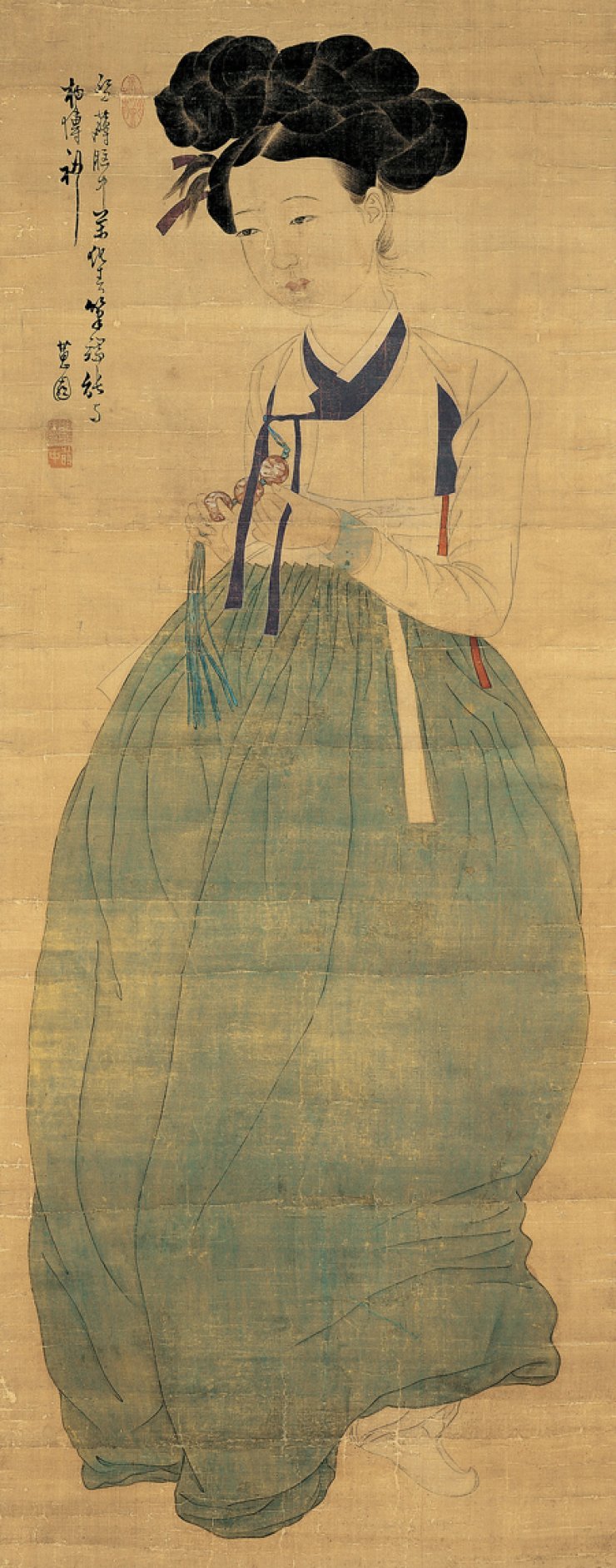
Ureongi Gaksi - The Snail Bride
A Korean folktale featuring a poor man instead of a prince.
Working in the rice paddy one day, he grumbled about having no one to eat with (because he was too poor to have a wife) and a mysterious voice told him to "eat with me."
Looking around, all he could see was a snail, so he took that home and eventually discovered that the snail could transform into a beautiful woman.
He made her his wife but one day a rich magistrate caught a look at the woman and decided to kidnap her for himself.
The husband went looking for her but could not find her, no one was willing to help a poor man over a magistrate and he eventually died of a broken heart, being reborn as a blue bird.
The magistrate refused to let the snail bride go and so she starved herself to death.

There are a number of versions of this story as well, most with tragic ends although there is a version that reunites the poor man and the snail bride.
There is also a similar Chinese Folktale known as the River Snail Maiden which includes a man finding a shell and thus a wife, and that bride being kidnapped by a rich man. While the story plays out differently, the ending is another tragic tale, more similar to the Korean story than the Javanese one.

#man suang fic inspiration#javanese folklore#korean folklore#chinese folklore#folklore#fairytales#snail brides
1 note
·
View note
Text
Tale of the Nine Tailed: Analysis and Theories of Ep 8
Welcome to another edition of Mind Melt On A Bun’s analysis and theories of TOTNT. I hope you all will enjoy this post, but fair warning it’s once again another VERY LONG POST! So if you want to turn on your thinking cap and face the risk of your brain blowing up into a million pieces then feel free to keep reading!

Snail Bride and Her Husband
Ureongi gaksi (우렁이 각시) or Snail Bride is a Korean legend which tells about a poor farmer who breaks a taboo and marries a woman who is actually a snail. One day while working in the rice paddy field, the farmer says to himself, “Who will I eat this rice with?”. To which a voice replied, “With me.”. Having heard this voice, the man turned around to see who it was, but only saw a snail. After having heard that, the man found that each day after returning home from work, a meal was always prepared for him.

The farmer was curious of who had been preparing his meal. So one day he pretended to go to work in order to catch a sight of whoever it was that had been preparing his meal. To his surprise, he had seen a beautiful woman emerging from the snail shell. Having been blown away by her beauty, he immediately asked her to live with him instead of returning to the snail shell. However, the woman told him it was not time yet and to be patient. Being the persistent man that he was, he eventually got the Snail to marry him.
The farmer became plagued with the fear that his beautiful Snail Bride might one day be taken away from him so he instructed her to never leave the house. The Snail Bride listened to her husband and did as she was told until one day when her mother-in-law told the Snail Bride to go and deliver lunch to the farmer. And so, the Snail bride did as she was told. However, along the way, the Magistrate who was enamoured by her beauty decided to kidnap her and make her his bride. Despite the farmer’s many efforts, he never found his Snail Bride and ended up dying of a broken heart and being reborn as a blue bird. Tragic I know !!!

Anyways, when applying this story to TOTNT, you will find that Ji Ah’s boss had shared many similar characteristics to the farmer from the Snail Bride myth such as persistency. Other clues that supports the ideal that Ji Ah’s boss is the farmer can be seen in the conversation between Green Juice Lady. The first clue is his fear of flying. This could be seen as a side effect of him being reborn in a previous life as a blue bird. I bet if Ji Ah used those Eyebrows of a Tiger Glasses, she would see him as a bird blue.
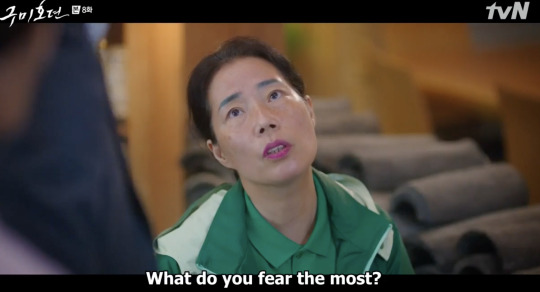

The second clue was in what the Green Juice Lady said, “ What are you doing here?”. I interpreted this as her knowing him in the past as well as her not expecting to see the farmer’s reincarnated self in the same vicinity as the Snail Bride.

Green Juice Lady Origin
In Korean mythology, there is a creature by the name of “Dueoksini/Dokeoksini” (두억시니는 ) that kills you by crushing your head (figuratively or literally). In Korean mythology, this creature is seen as an in between of a dokkaebi/goblin and a yokai. Because Dueoksinis have been mostly been forgotten throughout Korean literature, they are usually refer to as being a type of Korean Yokai.

Or the way I like to view the Green Juice Lady is that she's basically Pennywise, Freddy Krueger, and the Boggart rolled into one. After all its like Frank Hebert once wrote in Dune: “Fear is the mind killer”.

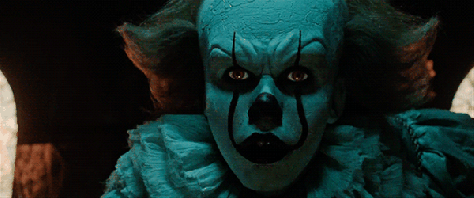

Taluipa
In TOTNT, the character Taluipa is seen as being the goddess of birth and fate, Sansin Halmoni. Besides having the ability of controlling birth and fate, Taluipa also can also foresee the future as well as grant immortality (i.e her husband). Given all of this, it is likely that her child, Bok Gil, would’ve had some pretty powerful abilities because he came from such a superior mother.
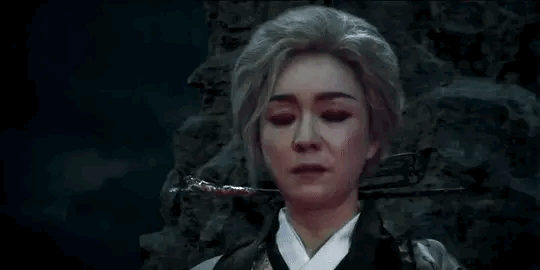

Now not much is known about Taluipa’s son other than he had committed suicide. Furthermore, the act of suicide was seen as a such a bad taboo that ensured he could never be reborn/reincarnated. In the context of TOTNT, it is inferred that even if you sacrifice yourself for the one you love, it is still considered suicide.
Lee Yeon’s Original Plan For the Imoogi
I think originally Lee Yeon had planned to take the Imoogi into himself and subsequently kill himself. However, when faced with the possibility that this would mean Lee Yeon could not be reincarnated, Ah Eum decided it was better that Lee Yeon killed her because at least she could be reincarnated.


Now you may think that well if Ah Eum sacrificed herself for the one she loves, isn’t that contradictory to what I said earlier about how sacrificing yourself for the one you love is still considered suicide and thus meant you couldn’t be reborn? It really doesn’t and here’s why. Remember that at this time, Ah Eum already had the Imoogi inside of her so her death by Lee Yeon’s hands were not seen as a sacrificial suicide. Rather, it was seen as him killing a greater evil and preventing the deaths of hundreds. Thus, this meant that Ah Eum could be reincarnated. Had Ah Eum ran into Lee Yeon’s knife or stabbed herself in the temporary moment she gain back control of her body, then that would’ve been seen as sacrificial suicide.

If both Lee Yeon and Ah Eum were able to find a loop hole at the very last minute that ensured Ah Eum’s reincarnation, I am sure that this time around Lee Yeon will be able to find a better loop hole given that he has had more time to than previously as well as learning from his past mistakes as it pertains to the Imoogi. I largely believe that this loop hole will have something to do with the favor Lee Yeon had asked of Taluipa’s husband. Maybe the favor Lee Yeon is asking Taluipa’s husband for is the elixir of life that is located in the Underworld (Hint: read my posts about Princess Bari). I think that Lee Yeon will want it just in case either him or Ji Ah dies in their battle against the Imoogi. Such an elixir could revive them!


Taluipa’s Son/Bok Gil = The Imoogi
As previously mentioned, I had theorized that Taluipa’s son, Bok Gil, must have been one hell of a powerful being given that his mom was a powerful Goddess herself. As to what those abilities could have been, it is still a mystery. However, I feel like his powers would’ve been connected the ones Taluipa had (i.e birth, fate, and ability to see what others cannot see). Again, not much was mentioned about him other than he committed suicide and that his name was Bok Gil.

Now let’s look at the Imoogi, we know that he has the power of life (bringing the bird back to life), death (sucking the life out of his nannies), and rebirth (being reborn as that boy).



By the way, I think it’s interesting that the cycle of life, death, and rebirth is represented as an “Ouroboros” or a snake eating its tail. Coincidence? I think not.
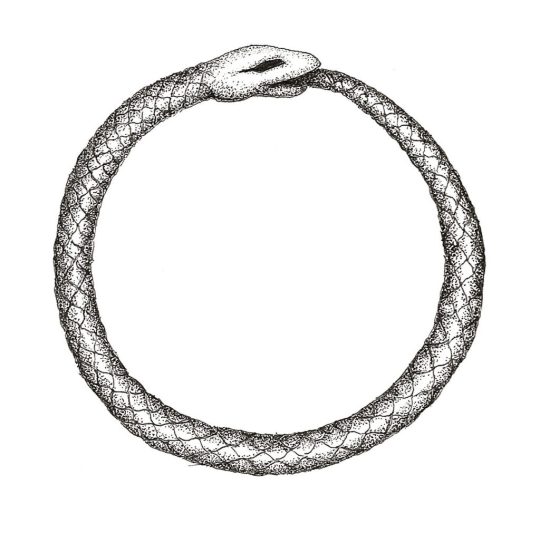
Anyways back to what else we know about the Imoogi. We know that he was born in a leap year as well as being born in a place between the living and dead (btw Lee Yeon was born in 420AD also a leap year..possible connection somehow?). The Imoogi could also see what others don’t see such as your soul and your deepest emotions.




If you think about it, when Bok Gil committed suicide, his soul/body was neither in the land of the living nor the dead. He was in between those two realms or in limbo. Connecting this to the fact that the Imoogi said he was born in a place between the living and dead, there is a significant possibility that Bok Gil is indeed the Imoogi. Furthermore, if you look at the kinds of power the Imoogi has and the powers that Taluipa has, you will find that they are strangely similar or related. If that doesn’t convince you enough then just compare the voice of Bok Gil to that of the Imoogi!

Imoogi and Lee Yeon
Initially, I had thought the Imoogi had wanted Lee Yeon for his fox bead (a kind of Yeouiju) so that it could become a dragon, but now I am beginning to think there’s more to the story than just Lee Yeon’s bead. If indeed Bok Gil is the Imoogi then I am left to wonder what kind of relationship did Lee Yeon have with Bok Gil before he died. Furthermore, could Lee Yeon have been part of the reason why Bok Gil committed suicide in the first place? If Lee Yeon had been part of the reason why Bok Gil committed suicide, then I can totally understand why Bok Gil/Imoogi would want to try to exact his revenge and/or anger on Lee Yeon. Maybe Bok Gil was jealous of Lee Yeon for getting more attention from his own parents than he was or maybe Lee Yeon got the girl he was interested in or maybe Lee Yeon was really mean and had bullied him or maybe the person who Bok Gil had died for (aka a loved) was somehow connected to Lee Yeon. I don’t know, I’m just purely theorizing and for all we know all the Imoogi wants is just Lee Yeon’s fox bead so that it can become a dragon.


Black and White Imagery
Other things I found interesting is the usage of black and white in Ep 8. For example, the shirts Lee Rang and Lee Yeon wears, the colors of the stones of the “Go Game”, and the cars in the background of the parking lot Lee Yeon was in.

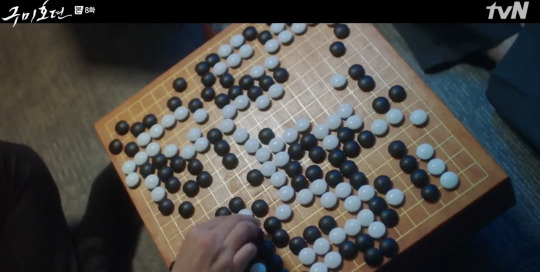
Typically, the color combination of black and white represents Yin/Yang, Good/Evil, and Life/Death. In either cases, the concept is the same. Both represent the concept of dualism or the ideal that everything is interdependent, interconnected, and interrelated. Meaning you can’t have Yin without Yang, Good without Evil, and Life without Death. Or in the case of Lee Yeon standing in between the two cars and the two doors, both Lee Rang and Ah Eum/Ji Ah’s lives and fate were interdependent, interconnected, and interrelated to that of Lee Yeon’s.


Episode 9 Predictions
Lee Yeon will get Lee Rang out of the Forest of the Preta and Lee Rang will realize that his brother never really abandoned him in the first place. Additionally, their time in the Forest of the Preta is like a blessing in disguise because it helped both brothers to resolve the misunderstanding that occurred 600 years ago.


Now with Ji Ah, I think she will overcome her fear of the car accident. However I think she will be faced with another fear of hers which is seeing Lee Yeon die. I think she will overcome this too, but the Green Juice Lady will pull out one last trick out of the bag. Instead of making Ji Ah relieve some of her worst nightmares, she will make Ji Ah live in a world where all her dreams have come true such as having her parents back and Lee Yeon by her side. The Green Juice Lady will do this as a way to make sure that Ji Ah would never want to leave. After all, why leave a world where all your dreams come true right? Plus, Ji Ah’s mentality will become weaker because she will start to believe that the dream world she is living in is a reality. Therefore, in order to win against the Green Juice Lady, one must have a strong mind that is not killed by fear nor weaken by fantastical delusions.

This kind of reminds of the creature, “Black Mercy”, from Super Girl. Briefly, “Black Mercy” is alien parasite that makes its host dream their perfect fantasy world while it feeds off of them. The only way for the host to get the “Black Mercy” to detach itself is for the host to realize that the fantasy world they are living in is not real. So for Ji Ah, maybe she would have to do the same on her own or it would take Lee Yeon coming into her dreamworld in order for her to realize this.

Last Remarks
For all of those who are still left confused as to why Lee Yeon chose to save Lee Rang first, you can check it out here:
https://mindmeltonabun-blog.tumblr.com/post/633271037441818624/tale-of-the-nine-tailed-ep-7-thoughts-and
And if you’re too lazy to click/read all of that post, I’ll put it simply here:
In the past, Lee Yeon chose to go after Ah Eum first instead of saving Lee Rang from the villagers burning down the mountain. So this time around Lee Yeon did not want to make the same mistake twice and also Lee Yeon wanted to atone for his past mistakes. Plus, Lee Yeon knew that between Lee Rang and Ji Ah, Lee Rang had the weaker mentality so he would need more saving than Ji Ah would.

Happy Readings! I need a drink now after writing all of this !

#tale of the nine tailed#taleoftheninetailed#totnt#leedongwook#lee dong wook#jo bo ah#joboah#joboa#jo bo a#kimbum#kim bum#kimbeom#kim beom#lee rang#leerang#lee yeon#leeyeon#jiah#ji ah#jia#ji a#aheum#ah eum#a eum#aeum#gumiho#nine tailed fox#imoogi#imugi#lee tai ri
158 notes
·
View notes